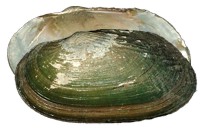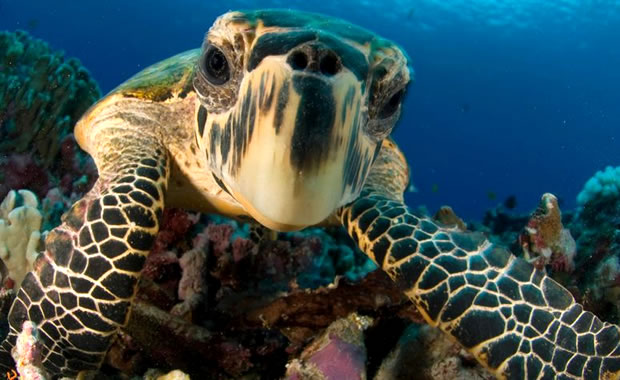
Aspatharia divaricata
|
Creature Profile
Aspatharia is a genus of freshwater mussel (aquatic bivalve mollusk) found in Africa. Two species are listed as vulnerable: A. divaricata found in Tanzania and Uganda, and A. subreniformis found in Malawi.
Freshwater mussels are marine mollusks that are able to move slowly through the sand, gravel, or silt of their aquatic habitat by means of a muscular foot. They have a close-fitting shell that protects them from predators and drying out when high up on the shore. Young mussels are born as "glochidia" (larvae) until they undergo metamorphosis into mussels. As larvae, they develop by attaching themselves to fishes for a short life as parasites. The process is further complicated because not only do the glochidia have to find a fish, but it has to be one of several fish species for the life cycle to continue.
The main host fish of this species is unknown. As mussels, they attach themselves to the river floors and may feed on phytoplankton, tiny zooplankton, and organic detritus that they are able to filter from the water using specialized regions of their shells. The water is filtered over the gills and the food particles become trapped and eventually digested. To reproduce, males release sperm into the water when the current is strong enough, allowing the sperm to travel and reach the eggs inside the shells of females. The fertilized eggs then develop into glochidia and grow inside the gill of the female until released into the water. In order to completely develop as mussels the larvae must find the host fish and attach themselves to its gills.
Aspatharia mussels are only found in freshwater lakes.
Like most freshwater mussels, these mussels are threatened by loss of habitat.
Wikipedia Article

|
Wikipedia Article Copyright Notice: This article is licensed under the GNU Free Documentation License. It uses material from the Wikipedia article "Aspatharia". |
Status/Date(s) Listed as Endangered
| Scientific Name | Status | Listing Date | Range | |
| 1. | Aspatharia divaricata | VU-IUCN | 2004 | Tanzania, Uganda |
| 2. | Aspatharia subreniformis | VU-IUCN | 2004 | Malawi |
June 6, 2017
Glenn, C. R. 2006. "Earth's Endangered Creatures - Aspatharia spp. Facts" (Online). Accessed 4/19/2024 at http://earthsendangered.com/profile.asp?sp=9801&ID=1.
Need more Aspatharia spp. facts?




